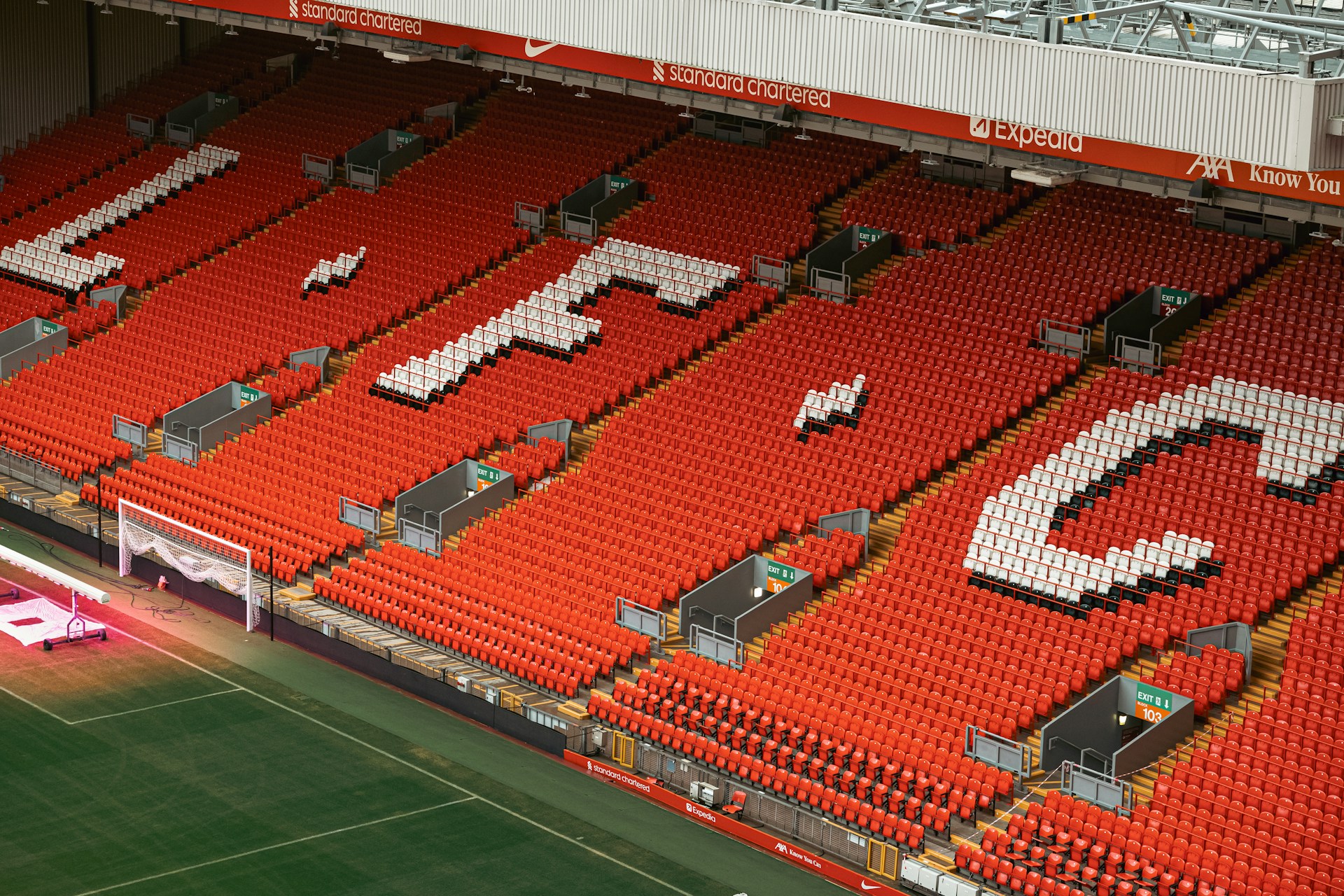Articles
Liverpool’s Boot Room: History, Modern Tactics, and Legends
 Photo by Nathan Wong on Unsplash
Photo by Nathan Wong on UnsplashThe enduring Boot Room tradition at Liverpool FC represents far more than a small room beneath the old Main Stand at Anfield. It embodies a deeply rooted culture of internal promotion and shared coaching wisdom at the storied club. This famed small room became an informal incubator for a dynasty of legendary Anfield managers, including Bob Paisley and Joe Fagan. Key figures like Bob Paisley and Joe Fagan were instrumental in shaping this enduring legacy of success.
At its heart, this tradition reflects the club’s relentless pursuit of the values embodied in the Liverpool Way. Its historical importance is reflected in the numerous domestic and European trophies won under its influence. That rigorous, demanding spirit continues to inspire the high standards upheld throughout the club. The spirit remains a crucial benchmark for the club’s modern football philosophy and identity.
The Mentorship Model's Modern Application
The fundamental mentorship model originally established by the legendary Bill Shankly is still a crucial template for current club staff continuity. This core philosophy is profoundly rooted within the football club’s history, fundamentally shaping Liverpool's unique and enduring identity.The approach emphasizes promoting and developing existing coaching talent from within the organization when they fully embody club values. Additionally, this strategy strategically integrates high-level external expertise when that perspective is deemed genuinely appropriate and beneficial for the overall program.
The internal elevation of vital figures demonstrates the legacy of passing on essential institutional knowledge. Recent transitions in backroom staff reflect this enduring commitment to continuity. Staff appointments are structured to balance internal experience with external expertise, maintaining continuity where possible.
This approach helps support tactical continuity during transitions following the departure of senior technical staff. The tradition values managers surrounding themselves with staff who understand the unique demands of the club. This internal process preserves institutional knowledge and reinforces the club's identity during managerial changes.
Maintaining a familiar, well-educated backroom structure supports stability during these periods of transition. This system allows for the ongoing transmission of the club culture. All new senior personnel are evaluated against established performance and cultural standards. The ethos endures today because of this structured approach.
Evolving Tactical Ideas and Possession Focus
The Boot Room’s constant focus on tactical innovation continues to evolve within today’s high-tempo professional game. This contemporary system blends selective high-intensity pressing with organized build-up play and swift transitions into the final attacking third.The coaching staff prioritizes creating strategies that effectively challenge opponents, utilizing compact, low-block defensive setups. This tactical evolution includes developing sophisticated patterns of progressive positional play to break down rigid defenses consistently.
Similar tactical philosophies are visible across global football, especially in New Zealand, where Wellington Phoenix and national teams emphasize structured, possession-based play. Players there constantly practice reading the game, dynamically adjusting their positioning, and reacting quickly under significant pressure.
This strategic mindset extends beyond sports, similar to how success in online casinos in New Zealand also relies on timing, awareness, and adaptability to changing conditions. The tactical philosophy emphasizes exploiting central spaces while maintaining balance and adaptability in modern play.
Data Analysis and the Boot Room's Evolution
The modern club now successfully leverages extensive data analysis, evolving the traditional Boot Room's core function of recruitment and critical player evaluation. The legendary coaches relied heavily on keen observational talent spotting and intensely rigorous debate to guide all acquisition decisions historically.Today’s process incorporates vast statistical models to identify potential senior transfer targets from around the global football market. A concrete example of this in 2025 is the acquisition of Florian Wirtz from Bayer Leverkusen, where the club combined data-driven profiling with thorough in-person scouting to secure a high-value, strategic signing.
This data-driven approach acts as a sophisticated digital extension of the original Boot Room's intense, fact-based tactical scrutiny. However, the data analysis is still always rigorously balanced with the essential human coaching perspective. The final decision always rests with the manager and the experienced Sporting Director, preserving the club's core ethos.
This careful merger ensures that modern recruitment remains fully aligned with the club’s well-established philosophy and requirements. The data provides detailed insight into the complex modern professional game. This integrated approach supports the club in maintaining a competitive advantage in recruitment.


